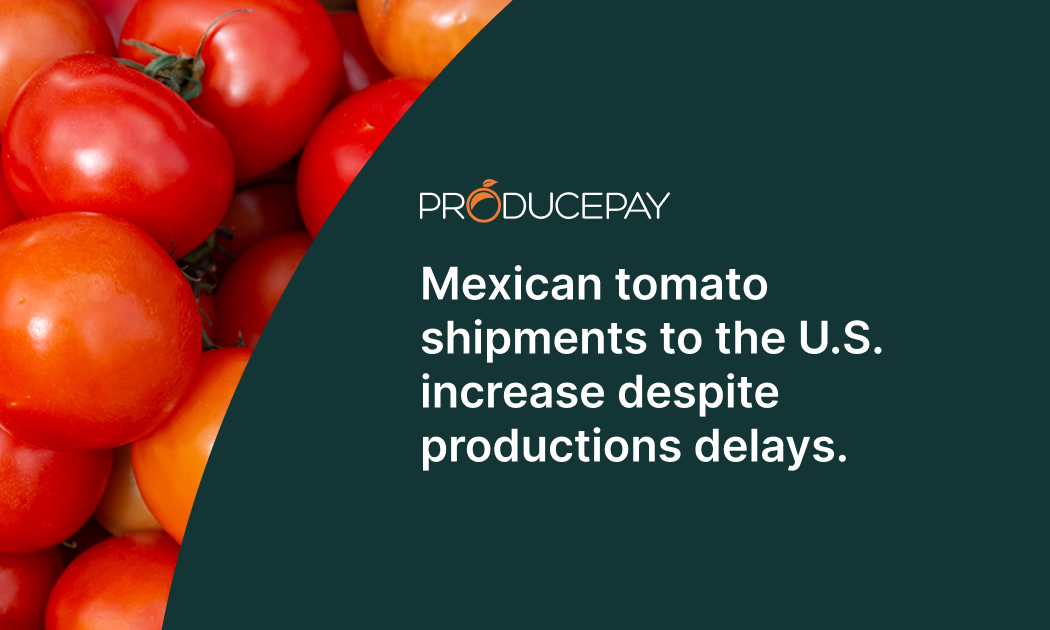
Mexican tomato shipments to the U.S. increase despite productions delays
The US imported 530,104 metric tons of tomatoes from Mexico during the first quarter of 2023.
This represents an increase of 6.0% compared to the same period in 2022 when Mexico exported 499,909 metric tons to the United States.
93.3% of Mexican tomatoes imported between January and March 2023 were conventional, while the remaining 35,712 metric tons were organic.
March 2023 saw a 9.2% increase in the production of conventional Mexican tomatoes compared to the same month in 2022. This growth can be attributed to a delay in harvesting in January and February when volumes were 5.5% and 4.6% lower than in the previous year.
Cold weather impacts tomato production
Low winter temperatures in Sinaloa, Mexico’s largest tomato-producing state, delayed the 2023 harvest, although recent statistics indicate that the situation is normalizing.
It should be noted that October and November are the months of highest tomato production in Mexico, while March and April are when exports to the United States are at their highest.
Therefore, any delay in the tomato harvest in Sinaloa could significantly impact both the domestic and export market. However, if tomato production in Sinaloa can recover, adverse effects on the regional and national economies will be reduced.
Is this a delay or a loss in production?
March’s increased export volume indicates that tomato production in Sinaloa has only been slightly delayed.
Farmers in some areas of Sinaloa, such as the municipality of Mocorito, have reported a lower-than-expected yield of 50-60 tons per hectare in open fields when forecasts indicated they would grow between 70-80 tons.
However, growers in other regions, such as the Escuinapa Valley, one of the most important agricultural regions in the state, indicate that they are obtaining excellent results in the quantity and quality of their tomato harvest this season.
It’s important to continue monitoring tomato production in Sinaloa over the next two months to determine if the cold weather only caused a delay in production or if there will be a lower total harvest this year, which could potentially lead to price increases.
